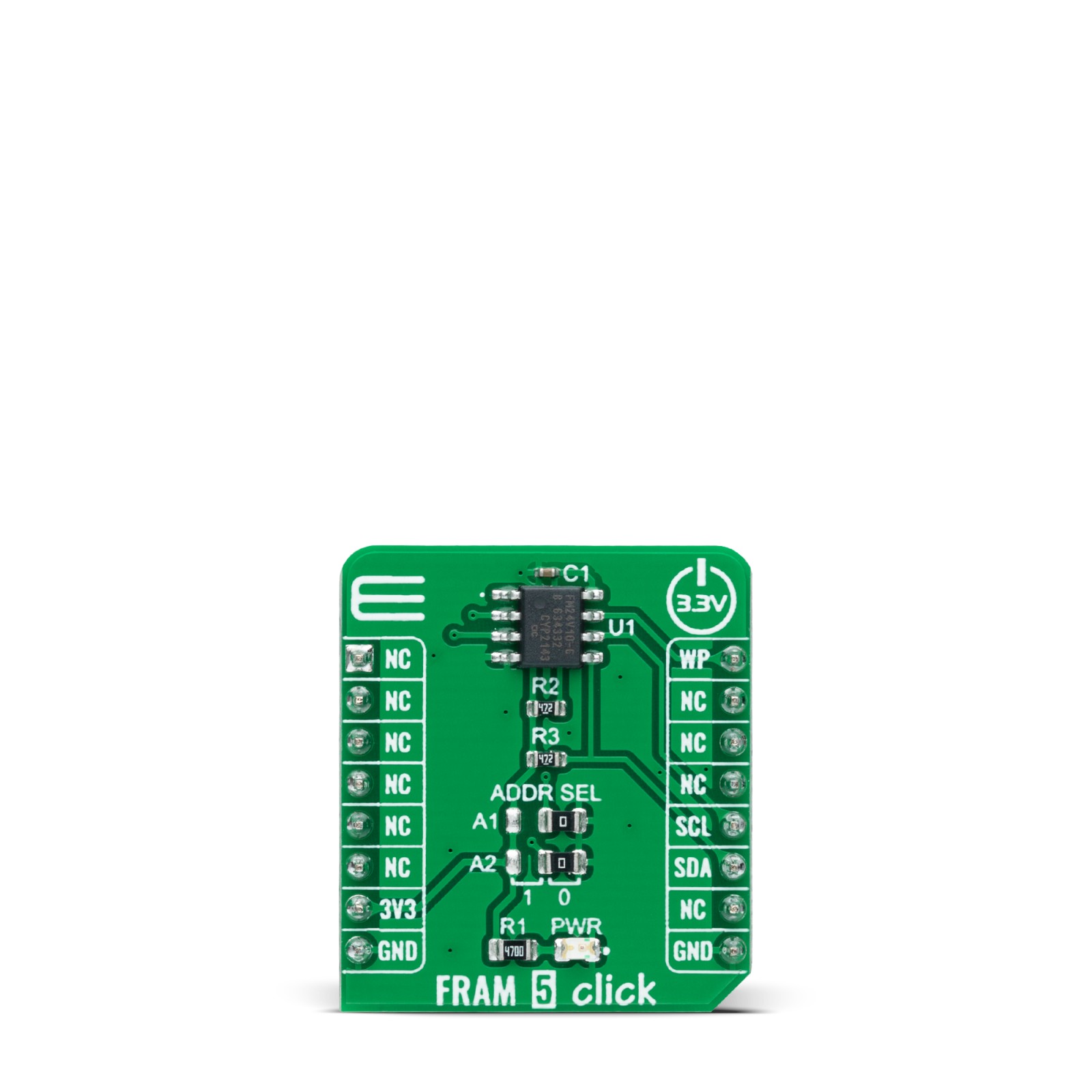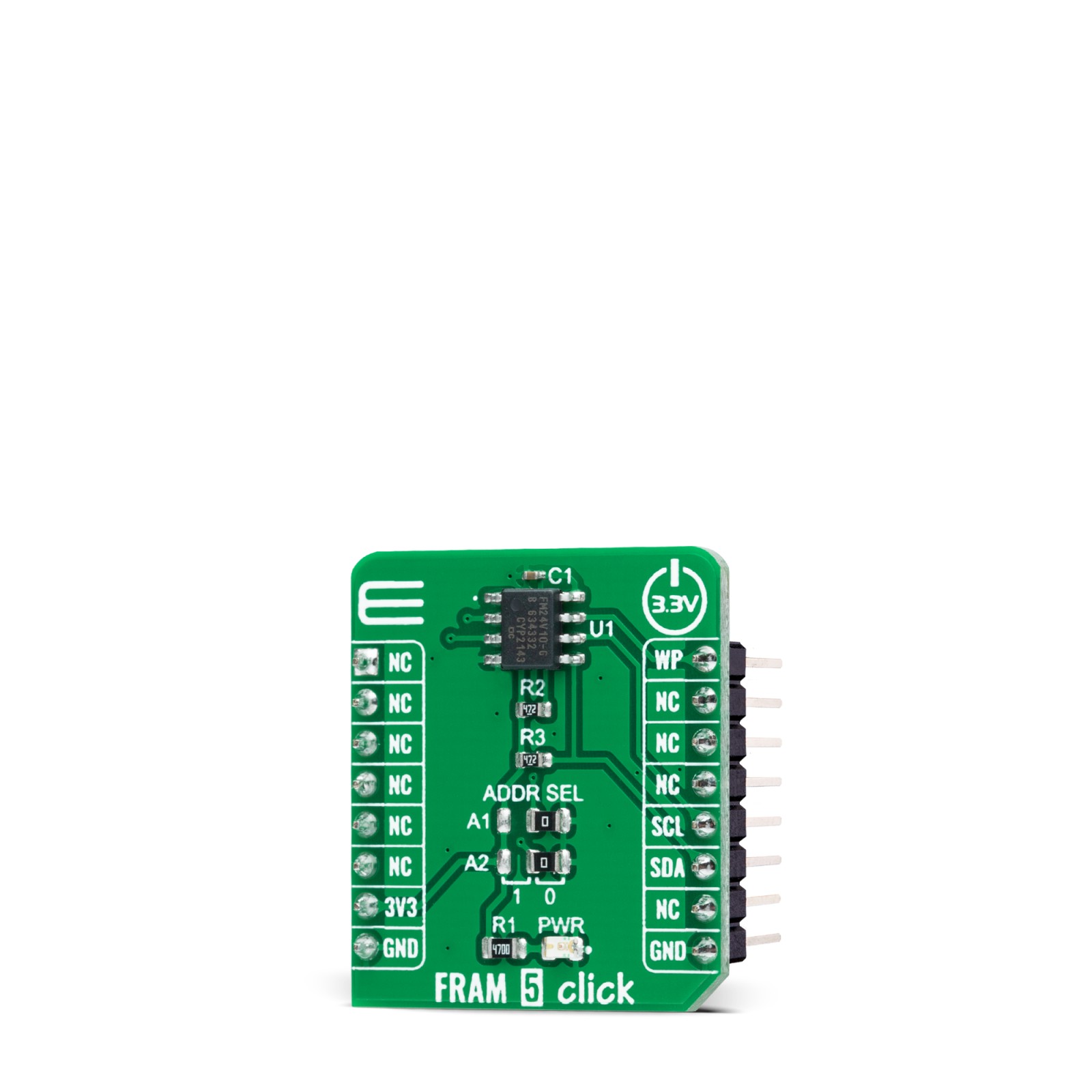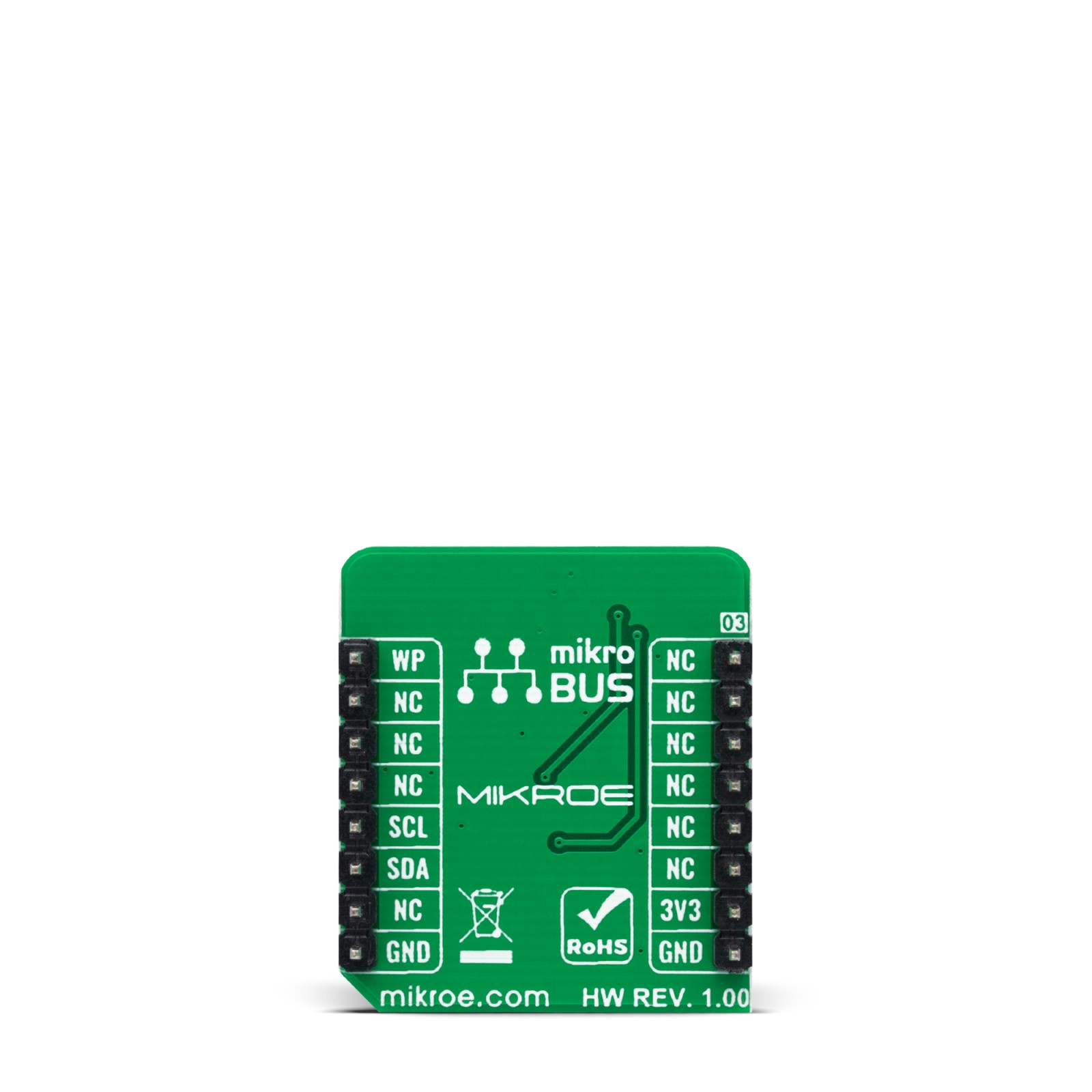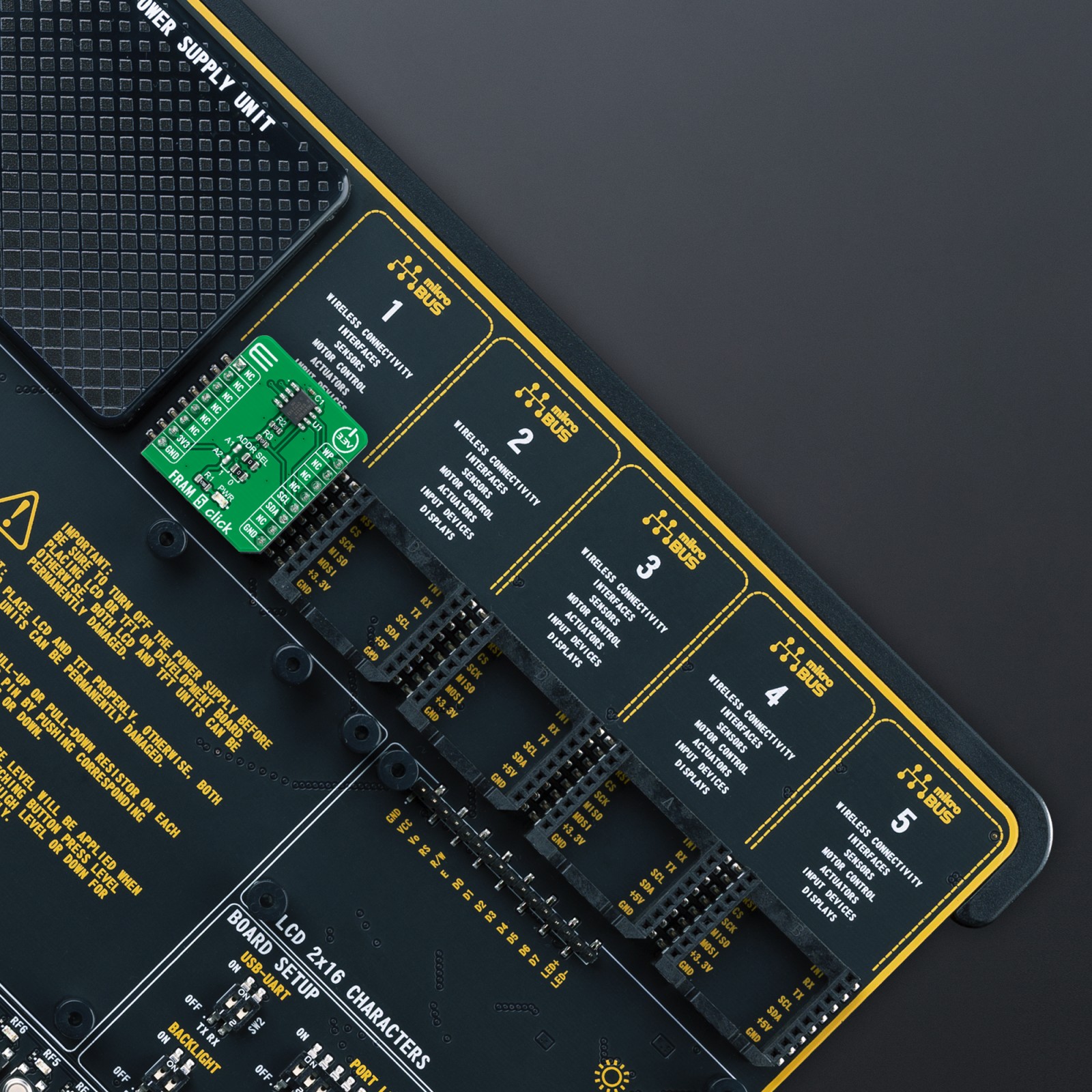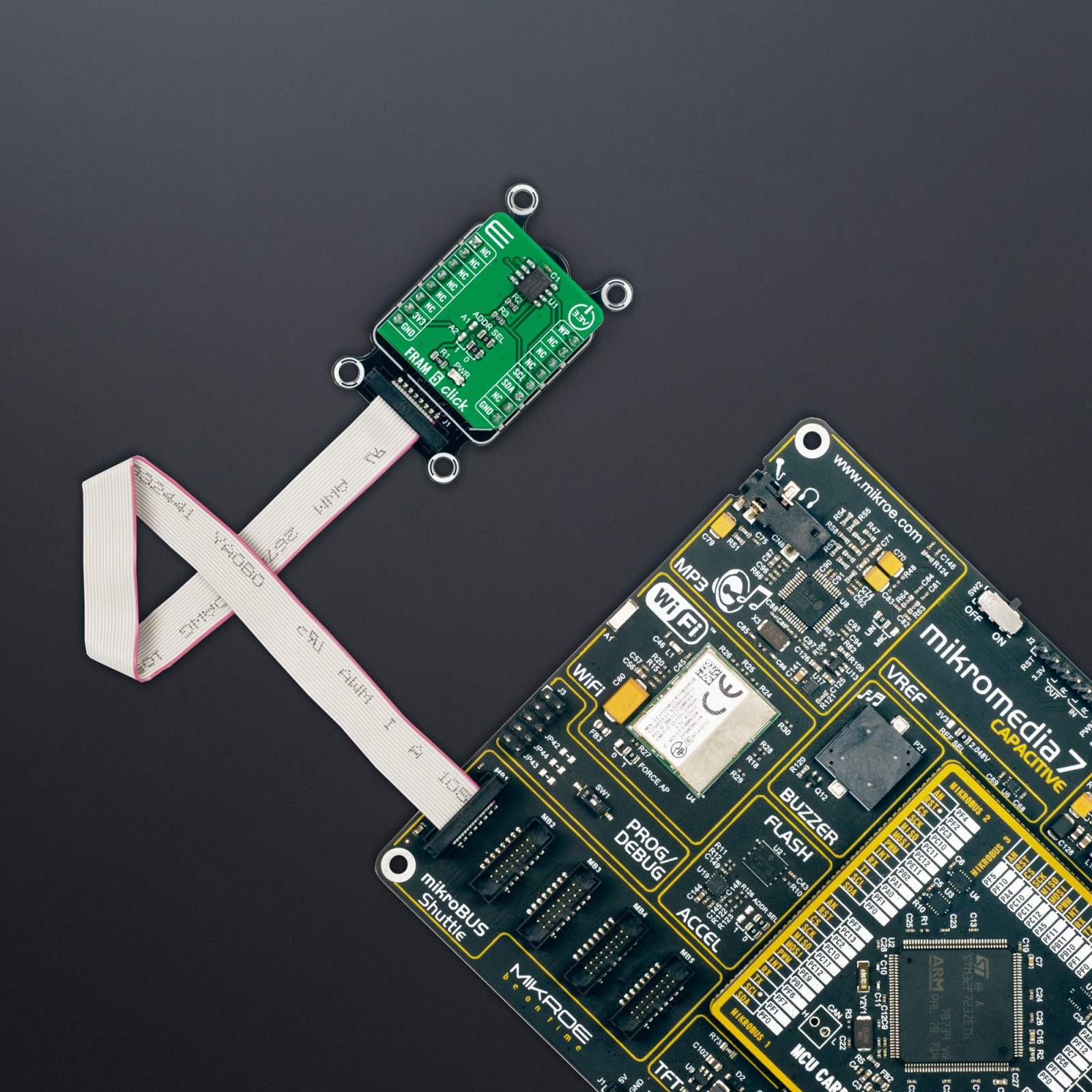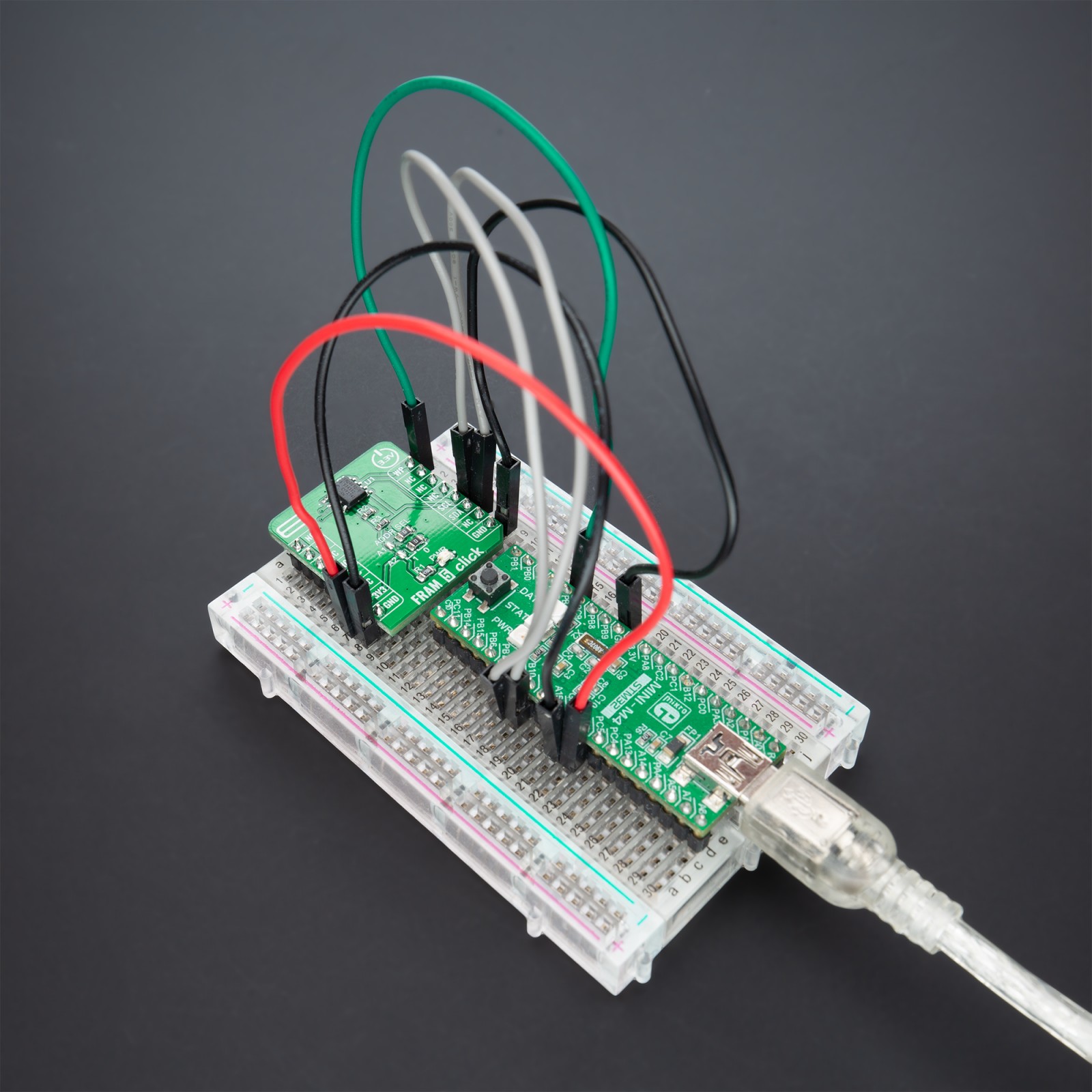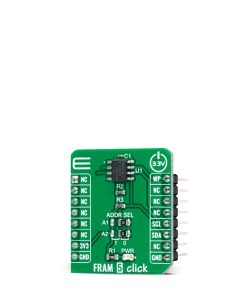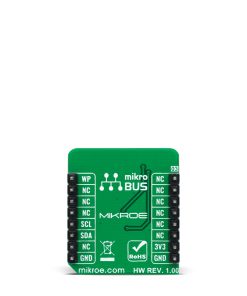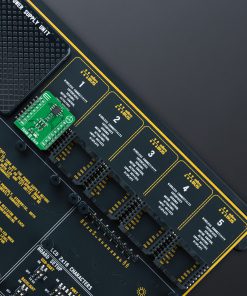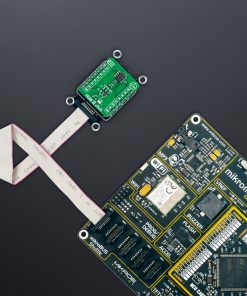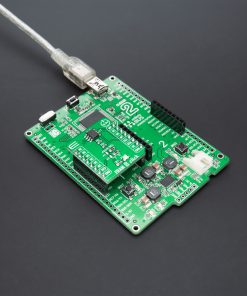FRAM 5 Click
R855.00 ex. VAT
FRAM 5 Click is a compact add-on board representing a highly reliable ferroelectric random access memory solution. This board features the FM24V10, a 1Mbit nonvolatile memory employing an advanced ferroelectric process organized as 128K words of 8 bits each from Infineon. This I2C configurable FRAM performs read and write operations similar to a RAM providing reliable data retention for 151 years while eliminating the complexities, overhead, and system-level reliability problems caused by EEPROM and other nonvolatile memories. This Click board™ is ideal for nonvolatile memory applications requiring frequent or rapid writes and unlimited endurance.
FRAM 5 Click is supported by a mikroSDK compliant library, which includes functions that simplify software development. This Click board™ comes as a fully tested product, ready to be used on a system equipped with the mikroBUS™ socket.
Stock: Lead-time applicable.
| 5+ | R812.25 |
| 10+ | R769.50 |
| 15+ | R726.75 |
| 20+ | R699.39 |

